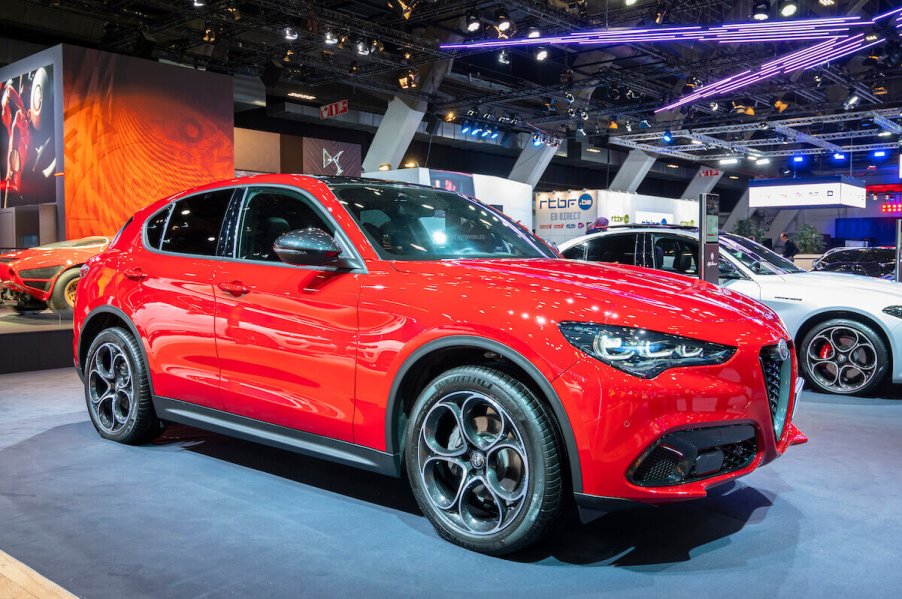
What Does Stelvio From the Alfa Romeo Stelvio Mean in English?
If you’re a fan of Alfa Romeo, chances are you know about their luxury compact SUV, the Alfa Romeo Stelvio. Forged from Italian engineering and Alfa’s racing heritage, the Stelvio is a formidable performance SUV that lives up to Alfa Romeo’s reputation for quality. While Alfa Romeo enthusiasts may be familiar with the Stelvio, not everyone knows what the word stands for.
History of Alfa Romeo Stelvio

Alfa Romeo is an Italian car manufacturer that has been around since 1910 when it was founded in Milan. Its history is steeped in racing culture, having competed in many famous motorsport events such as Formula One and the 24 Hours of Le Mans. Alfa Romeo also has a long line of production cars, most notably the Alfa Romeo Giulietta, Alfa Romeo Spider, and Alfa Romeo Stelvio.
The history of Alfa Romeo Stelvio dates back to 2017, when Alfa Romeo unveiled its first foray into the SUV/SUV-crossover market at the Geneva Motor Show. Alfa Romeo decided to break from their traditional sports car heritage and offer a performance-oriented luxury compact SUV that could keep up with Alfa’s other cars. And while style and performance have always been Alfa Romeo’s calling card, the Stelvio promised to be the perfect combination of Alfa’s performance prowess with a more rugged, off-road capability.
It didn’t take long for Alfa Romeo to receive recognition for the Stelvio, with the model receiving an impressive string of awards and accolades over the years.
What does Alfa Romeo Stelvio mean in English?
According to Between the Axles, Alfa Romeo named their Stelvio model after the famed mountain pass in Northern Italy near the Swiss border and Austria.
The Stelvio Pass is an incredible road that winds its way around some of Italy’s most majestic mountains, providing drivers with an unforgettable experience. Alfa Romeo named their luxury SUV after this iconic road to honor the craftsmanship and spirit of Italian engineering.
The word “Stelvio” is derived from the Latin for “steep” or “rugged,” meaning Alfa Romeo wanted to emphasize the ruggedness and performance of their latest vehicle. Alfa Romeo hoped that by naming the Stelvio after this famous road, they could capture its spirit and embody it in their model.
What do Alfa Romeo and Quadrifoglio mean?
Alfa Romeo’s name comes from Società Anonima Italiana Darracq (SAID), an Italian-French automobile company that Alfa Romeo’s founder, Ugo Stella, and Darracq started as a joint venture in 1906. In 1910, the company changed its name to “Anonima Lombarda Fabbrica Automobili” (ALFA), which translates to “Lombard Automobile Factory, Public Company.”
During the partnership, Giuseppe Merosi and Ugo Stella, the company’s chief engineers, signed a contract to produce two cars in 1910. The cars’ naming was based on horsepower; 12 hp and 24 hp. In 1915, Nicola Romeo was appointed as the organization’s director. It didn’t take long after Nicola Romeo’s appointment; in 1920, the company’s name was changed to Alfa Romeo, derived from Nicola’s second name.
As for Alfa Romeo’s Quadrifoglio badge, this dates back to 1923 when Alfa’s racing team featured a four-leaf clover as its logo. According to Motorifield, on April 15th, 1923, Alfa Romeo’s racing team driver Ugo Sivocci raced the “Targa Florio” with the Alfa Romeo RL car. His ambitions were to win the race, so he put a luck symbol on the car’s side, a white diamond background with a four-leaf clover in the middle. He was victorious and occasionally credited his luck symbol as the reason for his victory, like any other Italian racer.
After Sivocci’s victory, Alfa Romeo made the four-leaf clover its symbol and used it on Alfa’s racing cars. However, months later, Sivocci died in an Alfa Romeo test drive with no lucky symbol on the car. After his death, Alfa Romeo kept the luck charm symbol on Alfa’s racing cars, commemorating Sivocci’s victory. That’s how Alfa Romeo’s Quadrifoglio badge came to be!


